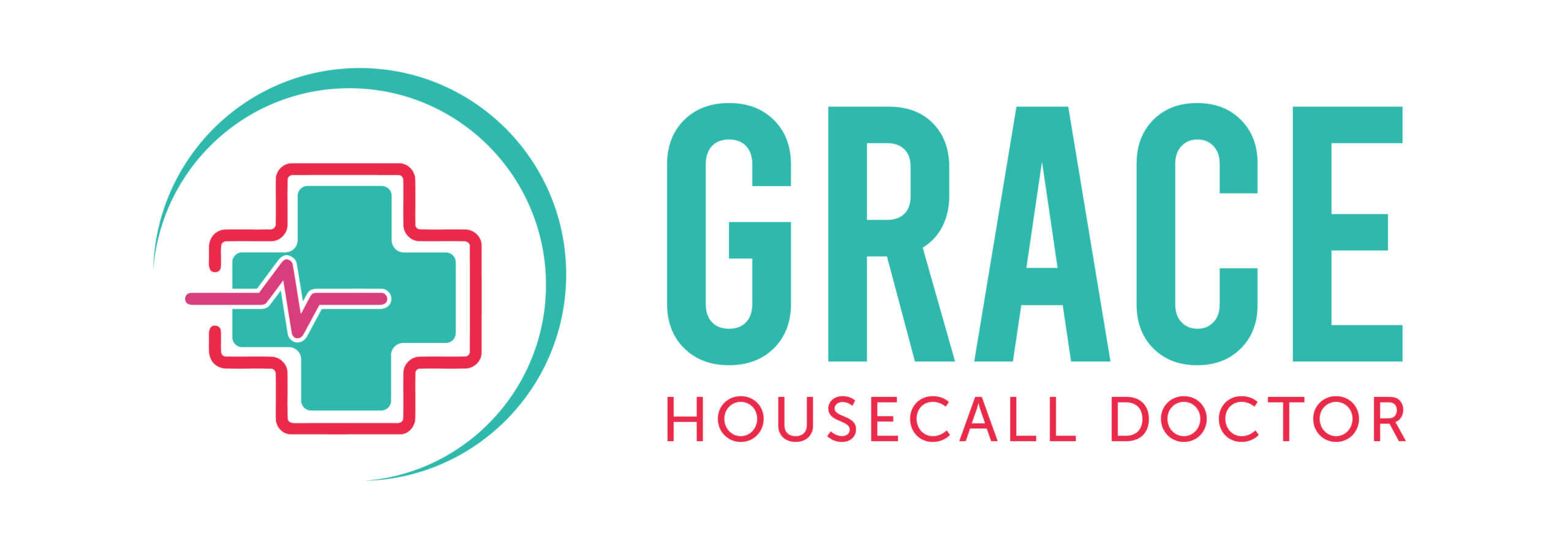Common Childhood Allergies

How Do Allergies Occur?
Allergic reactions are abnormal immune responses to substances or allergens, that are typically harmless to most people. The symptoms it produces can be mildly bothersome or even potentially fatal in a few cases. Some foods, dust, plant pollen, and medications are typical allergens. Many children and adults suffer from allergies.
What Causes these Allergies?
When a child who has some trigger allergen gets exposed to it, their immune system wrongly interprets it as a threat to their health. It overreacts, viewing the substance as an intruder that needs to be driven away from its surroundings. Immune cells produce antibodies called immunoglobulin E (IgE) to defend the body. These trigger specific cells to release chemicals into the bloodstream, such as histamine, to fight off the allergen “invader.”
This chemical acts as a triggering point for these allergies. The lungs, skin, eyes, nose, throat, gastrointestinal tract, and lungs can all be impacted by reactions. This allergic reaction will return if that allergen is exposed again in the future.
What are the different types of allergies?
Allergies of common types include:
Airborne Allergies
These consist of:
- Dander mites
- Pollen, also known as hay fever.
- Pets cockroaches Mold
- Dietary allergies
The main causes of food allergies in children are as follows:
- Milk from cows or milk protein
- Eggs
- Various seafood
- Tree nuts and peanuts
- Wheat sesame soy
Rhinitis Allergic (hay fever)
The most typical allergic disease in children is allergic rhinitis. Runny and itchy nose, sneezing, postnasal drip, and nasal congestion (blockage) are all symptoms. A child with allergies may also experience chronic ear issues and itchy, watery, red eyes. Despite the name “hay fever,” allergic rhinitis is not caused by hay and does not result in fever.
Insect sting allergies
Other common allergies include insect sting allergies, which can be treated with antibiotics and some chemicals found in over-the-counter medications. Some cosmetics and laundry detergents can cause hives to appear on the skin. Typically, someone’s reaction to the chemicals in these products is the cause of this. Some people can develop allergies to pesticides, household cleaners, and dyes.
Nasal clogging
The most frequent cause of persistent nasal congestion (a stuffy nose) in children is allergies. Sometimes, especially while sleeping, a child’s nose becomes so clogged that the child must breathe through the mouth. Additionally, if the child doesn’t get a good night’s sleep as a result, they might wake up feeling exhausted. The development of teeth and the bones in the face may be hampered if congestion and mouth breathing are not treated. These issues might be avoided with early treatment of the allergies causing the nasal congestion.
Infected ears
Allergies cause ear inflammation and may result in fluid buildup, which can encourage ear infections and diminished hearing. When learning to talk, a baby whose hearing is impaired for any reason runs the risk of developing poor speech. Earaches, ear itching, popping, and fullness (also known as “stopped-up ears”) can all be brought on by allergies. Anyone exhibiting these signs ought to consult an allergist for potential testing and care.
Food intolerances
In the US, up to 6 million children may suffer from a food allergy. Some particularly sensitive infants may experience allergic reactions to foods their mothers eat while a new mother is nursing them. Allergy testing is possible for infants. The child may feel better if the mother cuts these foods out of her diet.
Peanut and milk allergies are the most prevalent in kids, but other common triggers include eggs, fish, shellfish (like crab, lobster, crayfish, and shrimp), soy, tree nuts (like pecans, cashews, and walnuts), wheat, and other types of fish and shellfish. The most severe reactions are frequently to fish, shellfish, tree nuts, peanuts, and other food items; these allergies can last a lifetime. Milk, egg, soy, and wheat allergies are frequently outgrown in children.
The possibility of anaphylaxis, a potentially fatal reaction that impairs breathing, causes a sharp drop in blood pressure and can put the body into shock, should be known to all parents of children with food allergies. Because of this, epinephrine (also known as adrenaline) is typically prescribed for kids with food allergies and is given via auto-injector as soon as symptoms appear.
How Come Children Get Allergies?
Since allergies are frequently hereditary, they can be passed down through the genes of parents to their children. However, just because a parent has allergies doesn’t guarantee that their children will have it too. Additionally, the likelihood of having allergies is typically passed down rather than a specific allergy itself. Even if no family members are allergic, some children still have allergies. Kids with allergies frequently have allergies to other things as well.
Other children experience cross-reactions. For instance, children who are allergic to birch pollen may experience symptoms after consuming an apple because the fruit contains a protein that is similar to that found in pollen. Furthermore, for unknown reasons, those who are allergic to latex—a substance found in latex gloves and some hospital supplies—are more likely to also be allergic to foods like kiwi, chestnuts, avocados, and bananas.
Some allergy signs and symptoms include:
- Runny nose.
- Nasal congestion
- Sneezing
- Clearing of throat
- Rub one’s nose.
- Sniffling
- Snorting
- Sneezing
- Runny, itchy eyes
- Throat- and mouth-related tingling or itching. Although itching is not typically a complaint with a cold, it is a sign of an allergy issue. Breathing problems, including wheezing, coughing, and other respiratory symptoms. Recurring red, itchy, dry, and occasionally scaly rashes on the wrists, ankles, and folds of the skin may also be signs of an allergy.
How Is an Allergy Diagnosis Made?
Talk to our doctor if your child develops a “cold” around the same time every year or experiences cold-like symptoms that last longer than a week or two. Our doctor will identify an allergy and prescribe medication for allergy testing.
Allergists (a physician who specializes in the diagnosis and treatment of allergies) typically conduct skin tests for the most prevalent food and environmental allergens to determine the source of an allergy. Blood tests may be performed for children with skin conditions, those taking specific medications, or those who are extremely sensitive to an allergen.
A child must also exhibit symptoms for an allergy to be identified, even when testing reveals an allergy. A young child who tests positive for dust mites and sneezes frequently while playing on the floor is therefore thought to be allergic to dust mites.
How to manage the Allergies?
Allergy symptoms can be controlled, but there is no known cure. Keeping away from the allergens is the best way to deal with them. The allergy itself, as well as the potential effects of ingesting or coming into contact with the allergen, should be frequently discussed with children by their parents.
Inform every person who will be looking after your child, including the childcare staff, teachers, family members, and the parents of his or her friends.
Doctors may recommend medications such as antihistamines, eye drops, and nasal sprays if avoiding environmental allergens isn’t possible or doesn’t work. Doctors occasionally advise allergy shots (immunotherapy) to help a patient become desensitized to an allergen. However, they are only effective against allergens like dust, mold, pollen, animals, and insect stings. They are not used for allergies to foods.
How to Naturally Treat Allergies?
Using a natural home remedy may help children with mild allergy symptoms.
Aloe vera lotion
Children and toddlers with itching or redness from a skin allergy may benefit from using aloe vera gel. Due to its ability to heal wounds, aloe vera is an effective treatment for skin injuries like cuts, burns, and insect bites. Inquire about aloe vera gels that are suitable for children from our doctor.
Eye Drops
Children who experience the redness, itching, and swelling associated with allergic eye conditions may find eye drops to be an effective treatment. Make sure to make your young child lie down flat on their back if they are willing to try eye drops. Drop one drop into the lower eyelid after lowering one eyelid. After that, allow your child to rest for two minutes with their eyes closed.
You might still be able to use eye drops if your toddler or child is uncooperative. Close your child’s eyes and have them lie down. One eye drop should be placed in the closed eye’s inner corner. The drug will enter your child’s eye as they naturally blink. Which eye drops are suitable for toddlers or young children can be discussed with our doctor or pediatrician.
Cold and Hot Compresses
Even though allergies can make your child miserable, there are still things you can do to help. You can aid them in avoiding situations that exacerbate their symptoms. Additionally, you can discover more about allergy-fighting medications. Home remedies are also effective. Start by washing your face to remove any pollen before trying to relieve sinus pressure. After that, apply a warm compress to their forehead or nose. Simply inquire about the pressure points. Itchy eyes can be relieved by using a cold, wet washcloth or an ice pack wrapped in a towel for a short period.
Sea Salt
You can add sterile salt water up your child’s nostrils to soothe an itchy nose. Pollen, dust, and dander can all be removed with its assistance. It might even aid in mucus evaporation. Request assistance from the pharmacist in locating a spray for kids. Older children might be able to use a neti pot and sterile salt water to clear their nasal passages.
Shots for allergies
The doctor might advise allergy shots if your child’s allergies are severe or if they don’t improve. Over time, they’ll assist them in becoming less susceptible to allergy triggers. They will receive a tiny dose of the allergens that are the source of their problems with each shot. The intention is to lessen their body’s response when they regularly come into contact with them. For this to work, it may take several months or longer of consistent shots. They might require the shots for many years.
When to Consult a Medical Professional?
After attempting some at-home remedies, if your child’s discomfort is persistent, speak with our healthcare professional. Allergies that result in serious symptoms like breathing difficulties must be treated right away. Our doctor will be able to help if your child’s allergy symptoms are severe enough to prevent them from going to daycare or school. Treatment options like allergy testing, medications, and immunotherapy (allergy shots) may be discussed and provided if required.






